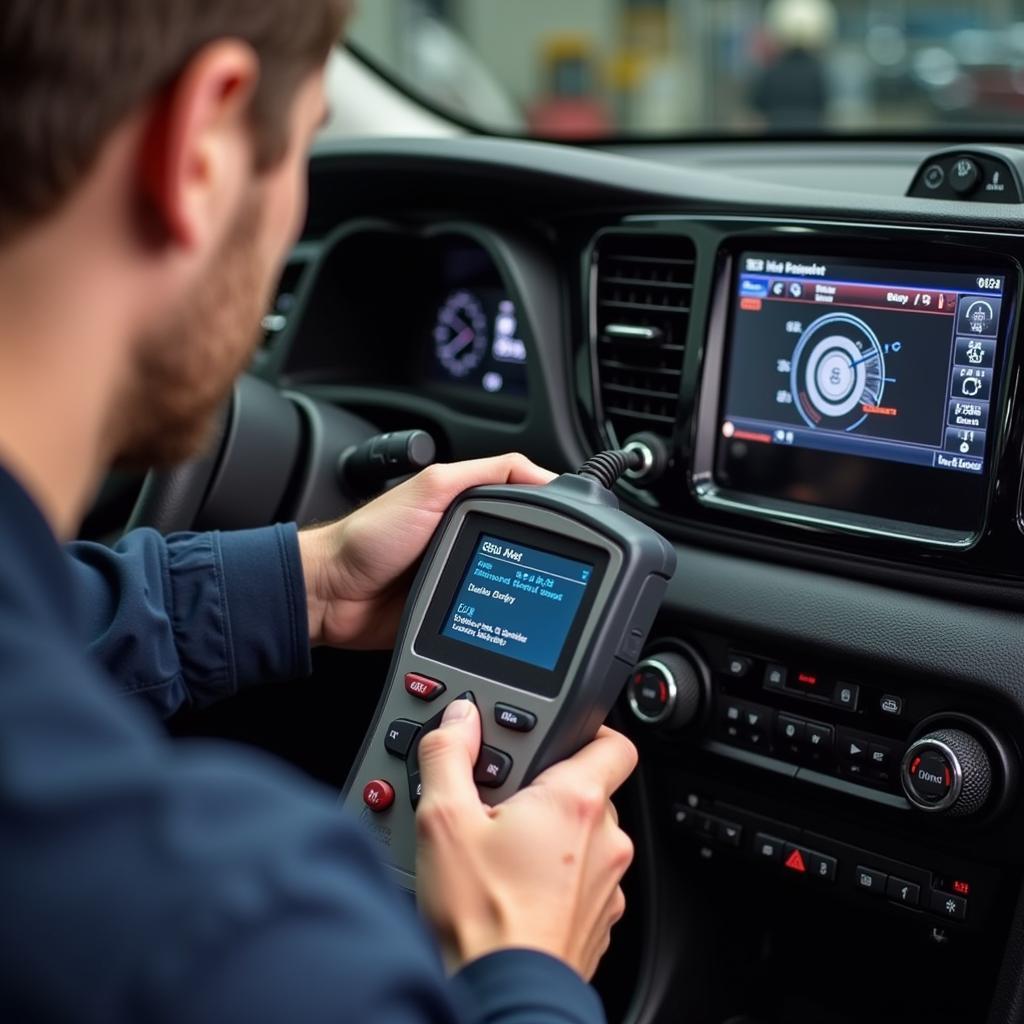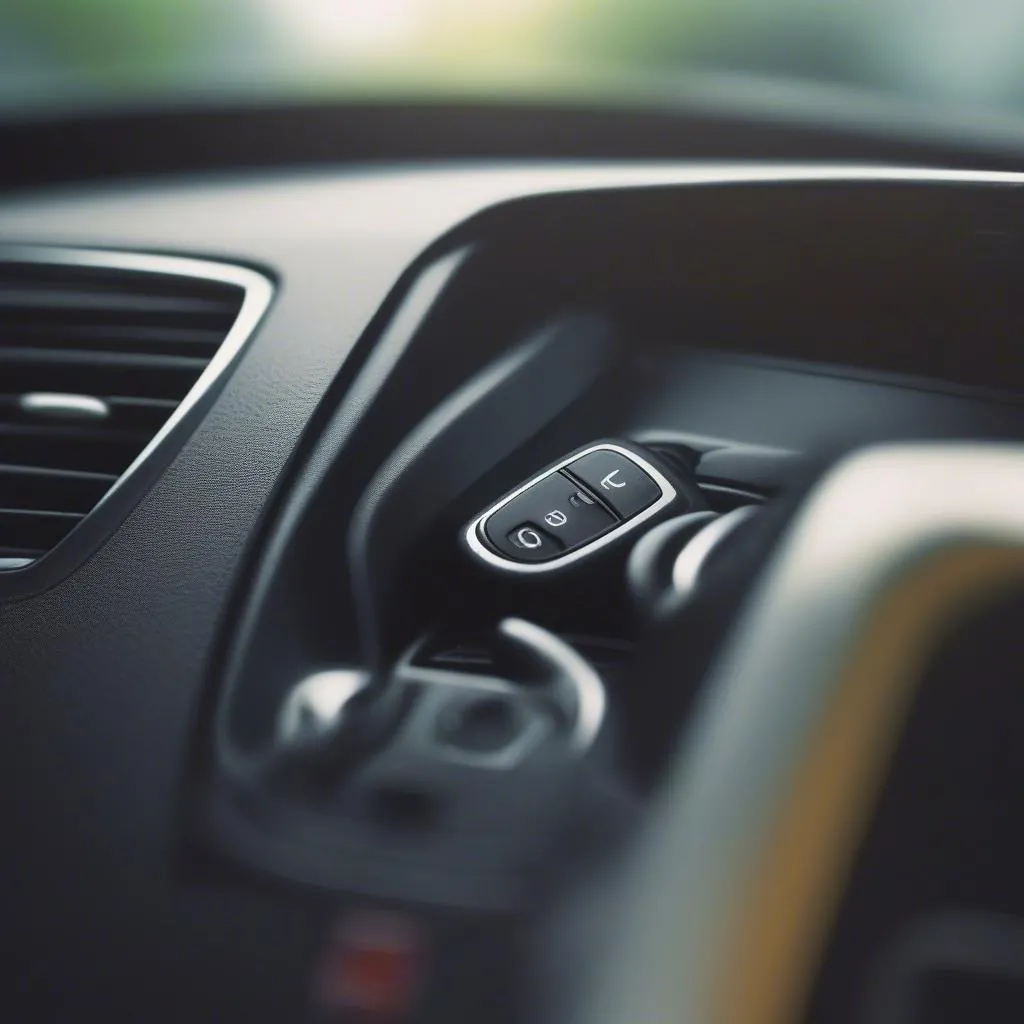You’ve just replaced your worn-out brake pads, a job well done! But then you start the car, and that pesky brake warning light is still glaring at you. Frustrating, right? Don’t worry, you’re not alone. This is a surprisingly common issue, and it doesn’t necessarily mean you’ve done something wrong. Let’s explore why your brake warning light might still be on after changing the pads and how you can fix it.
If you’ve been struggling with a brake fluid warning light on an older BMW, you might find this information related to an e36 brake fluid warning light useful.
Common Causes of a Persistent Brake Light
There are several reasons why your brake warning light remains on even after new brake pads have been installed. Understanding these potential causes can help you pinpoint the problem and get back on the road safely.
Brake Pad Sensor Issues
Most modern vehicles use brake pad wear sensors. These small wires embedded within the brake pad material trigger the warning light when the pads wear down to a certain level. Sometimes, these sensors can be damaged during pad replacement, become disconnected, or simply malfunction. A faulty sensor will keep the warning light illuminated even with new pads.
Low Brake Fluid
Low brake fluid is another frequent culprit. While seemingly unrelated to new brake pads, the fluid level can drop when the pistons in the brake calipers are compressed to accommodate the new, thicker pads. If the fluid level was already borderline low, this extra compression can trigger the warning light.
ABS System Malfunction
While less common, a problem with the Anti-lock Braking System (ABS) can also illuminate the brake warning light. This could be due to a faulty ABS sensor, a wiring issue, or even a problem with the ABS module itself. Diagnosing ABS issues often requires specialized diagnostic tools.
Troubleshooting the Warning Light
Now that we’ve covered the common causes, let’s look at some troubleshooting steps you can take.
Check the Brake Pad Sensors
Visually inspect the brake pad sensors. Ensure they are correctly installed, connected, and undamaged. If a sensor is broken or disconnected, it needs to be replaced.
Top Up Brake Fluid
Check your brake fluid reservoir. If the level is low, carefully add the correct type of brake fluid as specified in your owner’s manual. Don’t overfill!
Inspect Brake Lines and Hoses
Examine your brake lines and hoses for any signs of leaks or damage. Leaks can lead to low brake fluid and trigger the warning light.
Check Your Owner’s Manual
Your owner’s manual is a valuable resource. It should contain specific information about your vehicle’s brake system and warning lights, including any reset procedures.
“Always prioritize safety when dealing with brakes. If you’re unsure about any step, consult a qualified mechanic.” – John Smith, Automotive Engineer at CARDIAGTECH.
When to Seek Professional Help
If you’ve tried these troubleshooting steps and the warning light persists, it’s time to seek professional assistance. A qualified mechanic with diagnostic tools can pinpoint the exact cause of the problem, whether it’s a complex ABS issue or a simple wiring fault.
What does the brake warning light even look like? A helpful resource is this article on what does a brake warning light look like.
Resetting the Brake Warning Light
In some cases, the brake light may need to be manually reset after the underlying issue is resolved. This procedure varies depending on the make and model of your vehicle. Some vehicles require a diagnostic scan tool to reset the light. Refer to your owner’s manual or consult a mechanic for specific instructions.
Have you ever encountered issues with your Mini’s brake warning light? This guide on mini brake pad warning light reset might be helpful.
“Modern vehicles rely heavily on electronic systems. Using the correct diagnostic tools is crucial for accurate troubleshooting and repair.” – Maria Garcia, Senior Diagnostics Technician.
 Mechanic Using Diagnostic Tool
Mechanic Using Diagnostic Tool
Conclusion
Having your brake warning light stay on after changing the brake pads can be a frustrating experience. However, by understanding the common causes and following the troubleshooting steps outlined above, you can often resolve the issue yourself. Remember, a properly functioning brake system is crucial for your safety. If you’re in doubt, always consult a qualified mechanic. For example, if you own a 2017 Honda Civic and experiencing this problem after changing your brake pads, check this specific guide on 2017 honda civic lx brake pad changed warning now on. Don’t ignore that warning light – address it promptly to ensure your safety on the road. Addressing problems like this can also prevent further complications, such as those described in articles about audi abs brake warning light.

